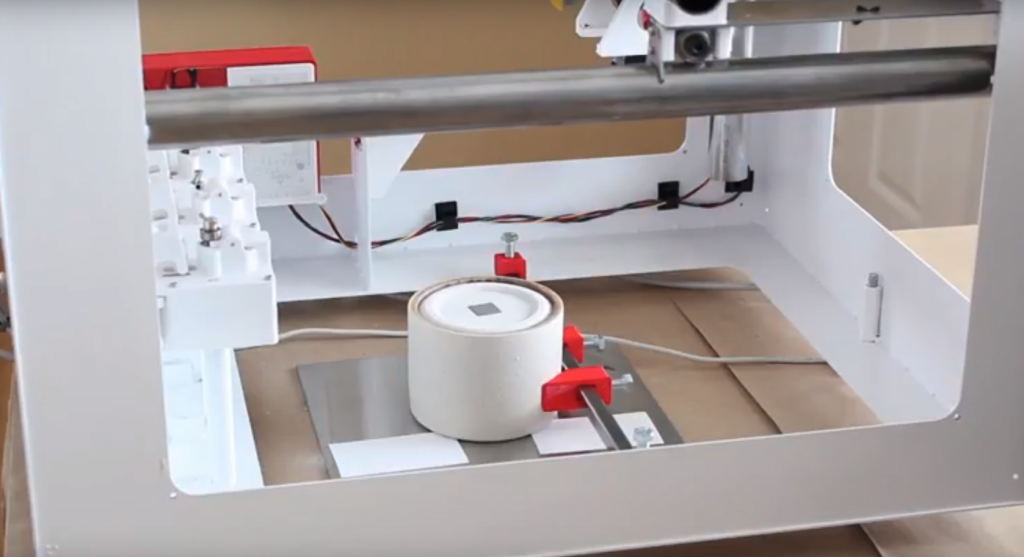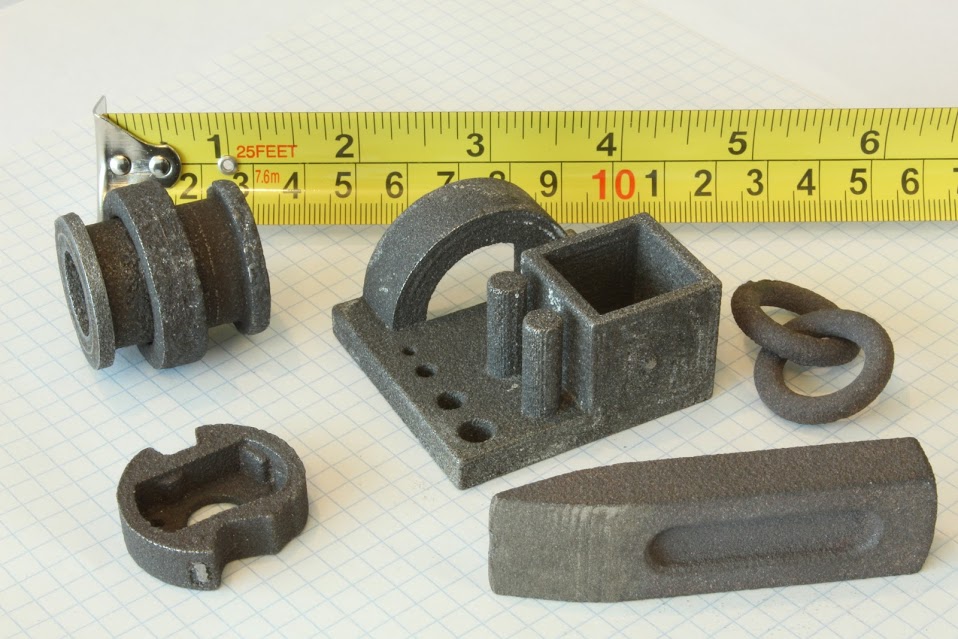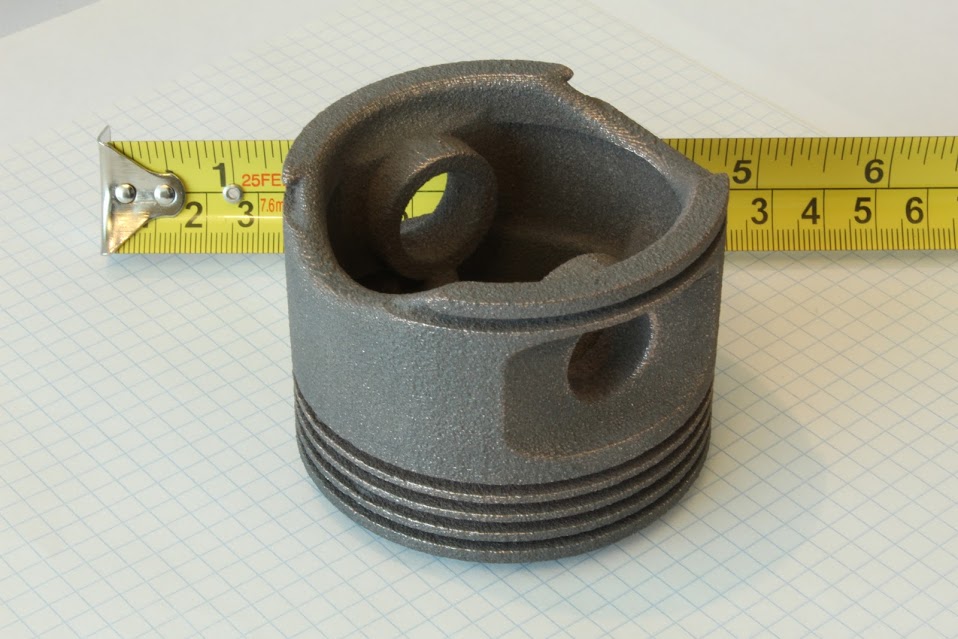iro3d, a metal 3D printer startup based in Seattle, Washington, has started shipment of its $5,000 desktop systems.
Available for U.S. pre-oders from May 2018, the company reported in June that production was “on schedule.” Now, iro3d has reportedly completed 4 orders within the past few months, delivering to a potential reseller in Hong Kong, one Canadian company, and two independent customers in the U.S.
Selective Powder Deposition
The iro3d metal 3D printer is a compact desktop system that uses a process termed Selective Powder Deposition (SPD).
In SPD, metal powders are deposited alongside various layers of sand support through a tubular “pourer” head. Completed inside a crucible, the 3D printing process is relatively slow. As an estimate, iro3d recommends that users allow about 24 hours for completion dependent on part complexity.
In the last step of 3D printing, the crucible gets filled to the top with sand, and a tether that appears in the center as a small square of metal powder.

At this point, the sand/powder crucible is transferred to a kiln. Before heating, “pancakes” of filler metal are placed directly over the metal powder window on top of the sand. A lid is added, followed by coke, and more sand to compact all the contents below.
Metal via capillary action
In the kiln, the crucible is baked at different temperatures dependent on the melting point of the filler metal, and the 3D printed metal powder. On iro3d’s recommendation: “For high-carbon steel the temperature is 1250°C, hold time is 3 hours. For copper-iron and copper-nickel the temperature is 1184°C, hold time is 2 hours.”
Here, we see how the SPD process is related to the metal brazing process, commonly used in joining to combine two or more different metals.
Inside the kiln, the filler metal melts and is soaked up by the metal powder due to capillary action. Capillary action occurs in molten metal when the adhesive force is stronger than the cohesive force – creating an attraction between the liquid metal particles and the related powdered metal. As such, the liquid metal fills all the gaps between the powdered particles and, presumably, brings those particles up to the same temperature to form a kind of eutectic alloy.
Capillary action does not occur between the molten metal and sand due to the absence of attraction between metal particles and the dissimilar sand grains.
After melting, the crucible is left to cool. Solidifying the 3D printed metal shape at its core. Post processing is completed by brushing away excess sand, sand blasting or machining. The metal “tether,” that acts as a channel between filler metal “pancakes” and the deposited powder, can be removed with a chisel and machined to finish.

iro3d printer technical specifications
At present, high-carbon steel, copper-iron and copper-nickel are the only material compositions thoroughly tested by for iro3d printing, though the company says “Mild steel, copper-silver, copper-gold, silver-gold, gold-nickel, and silver-nickel should be possible too.” Other metals, like titanium or aluminum, would require a controlled inert atmosphere.
Unlike other metal 3D printing process that use a kiln, (Desktop Metal, Markforged, and metal filaments like Filamet) there is no shrinkage in the SPD process. However, a 2% shape distortion occurs when parts are baked in a stainless steel crucible, rather than a ceramic crucible.

The volume of the iro3d printer is approximately 300 x 300 x 100 mm. It has a horizontal resolution of 0.05 mm, and 3D prints with a layer thickness of 0.3 mm. The “pourer” diameter, used for sand and metal powder deposition is 1mm. As a starting price, iron and support powders for the system are around $5 per pound. The starting price of the 3D printer is $5,000, plus shipping.
For the latest additive manufacturing developments subscribe to the 3D Printing Industry newsletter, find us on Facebook and like us on Twitter. Search open opportunities and apply with 3D Printing Jobs. You can also make a profile to advertise your latest vacancies.
Featured image shows the iro3d printer. Photo via iro3d


